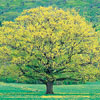Post by castanea on Jan 25, 2015 12:34:15 GMT -5
These trees are vigorous growers and produce a small sweet fruit with a seed that is also edible. I have never eaten the fruit and until recently was mostly oblivious to these trees. Their use as a human food source though goes back a long way:
"In Zhoukoudian, China hackberry seeds have been found in the cave deposits of the Peking Man dig site along with other food stuffs, which sets the earliest known date for their consumption by humans at around 500,000 years ago. The berries were also one of the most common plant remains found at the Meadowcroft Rock Shelter site in Pennsylvania. Archaeologists estimate the site was occupied by hunter-gatherers as far back as 16,000 years ago. In central Turkey, the uncovering of the Neolithic town of Çatalhöyük revealed hackberries at every level of the dig. Inhabited between 7,000 and 9,000 years ago, Çatalhöyük gives evidence that it was not only hunter-gatherers who relied on the humble tree as a food source; established agricultural communities did as well.
With a range that covers every continent except Antarctica—though who knows what’s buried under all that ice—it is not surprising that caches of hackberries have been discovered at such wide spread archaeological sites as Peru, Indonesia, Sudan and South Africa. Of course numerous Native American groups valued the tree as well. Among the Kiowa the drupes were mashed into a paste which was then molded around a stick and roasted over a fire. The Comanche on the other hand were known to mix the fruit paste with fat, and roll it into a ball before cooking. For the Osage it was common to form the berries into cakes to be stored for winter. This method of preservation was followed by the Mescalero and Chiricahua Apache as well, though they also used the fruit to make jelly in addition to simply eating it fresh. The Dakota ground the whole berry, flesh and stone, and used it as a seasoning for their meat. Ground drupes were turned into a type of porridge among the Meskwaki, while the Pawnee mixed the mashed berries with fat and parched corn."
www.homestead.org/MicahJanzen/Hackberry/HumbleHackberry.htm
There seems to have been little work done anywhere with respect to selecting or breeding for larger fruit size. Oikos does however sell one tree that apparently has larger fruit:
www.oikostreecrops.com/product.asp?strParents=0&CAT_ID=0&P_ID=1020&strPageHistory=search&numSearchStartRecord=1
"In Zhoukoudian, China hackberry seeds have been found in the cave deposits of the Peking Man dig site along with other food stuffs, which sets the earliest known date for their consumption by humans at around 500,000 years ago. The berries were also one of the most common plant remains found at the Meadowcroft Rock Shelter site in Pennsylvania. Archaeologists estimate the site was occupied by hunter-gatherers as far back as 16,000 years ago. In central Turkey, the uncovering of the Neolithic town of Çatalhöyük revealed hackberries at every level of the dig. Inhabited between 7,000 and 9,000 years ago, Çatalhöyük gives evidence that it was not only hunter-gatherers who relied on the humble tree as a food source; established agricultural communities did as well.
With a range that covers every continent except Antarctica—though who knows what’s buried under all that ice—it is not surprising that caches of hackberries have been discovered at such wide spread archaeological sites as Peru, Indonesia, Sudan and South Africa. Of course numerous Native American groups valued the tree as well. Among the Kiowa the drupes were mashed into a paste which was then molded around a stick and roasted over a fire. The Comanche on the other hand were known to mix the fruit paste with fat, and roll it into a ball before cooking. For the Osage it was common to form the berries into cakes to be stored for winter. This method of preservation was followed by the Mescalero and Chiricahua Apache as well, though they also used the fruit to make jelly in addition to simply eating it fresh. The Dakota ground the whole berry, flesh and stone, and used it as a seasoning for their meat. Ground drupes were turned into a type of porridge among the Meskwaki, while the Pawnee mixed the mashed berries with fat and parched corn."
www.homestead.org/MicahJanzen/Hackberry/HumbleHackberry.htm
There seems to have been little work done anywhere with respect to selecting or breeding for larger fruit size. Oikos does however sell one tree that apparently has larger fruit:
www.oikostreecrops.com/product.asp?strParents=0&CAT_ID=0&P_ID=1020&strPageHistory=search&numSearchStartRecord=1

